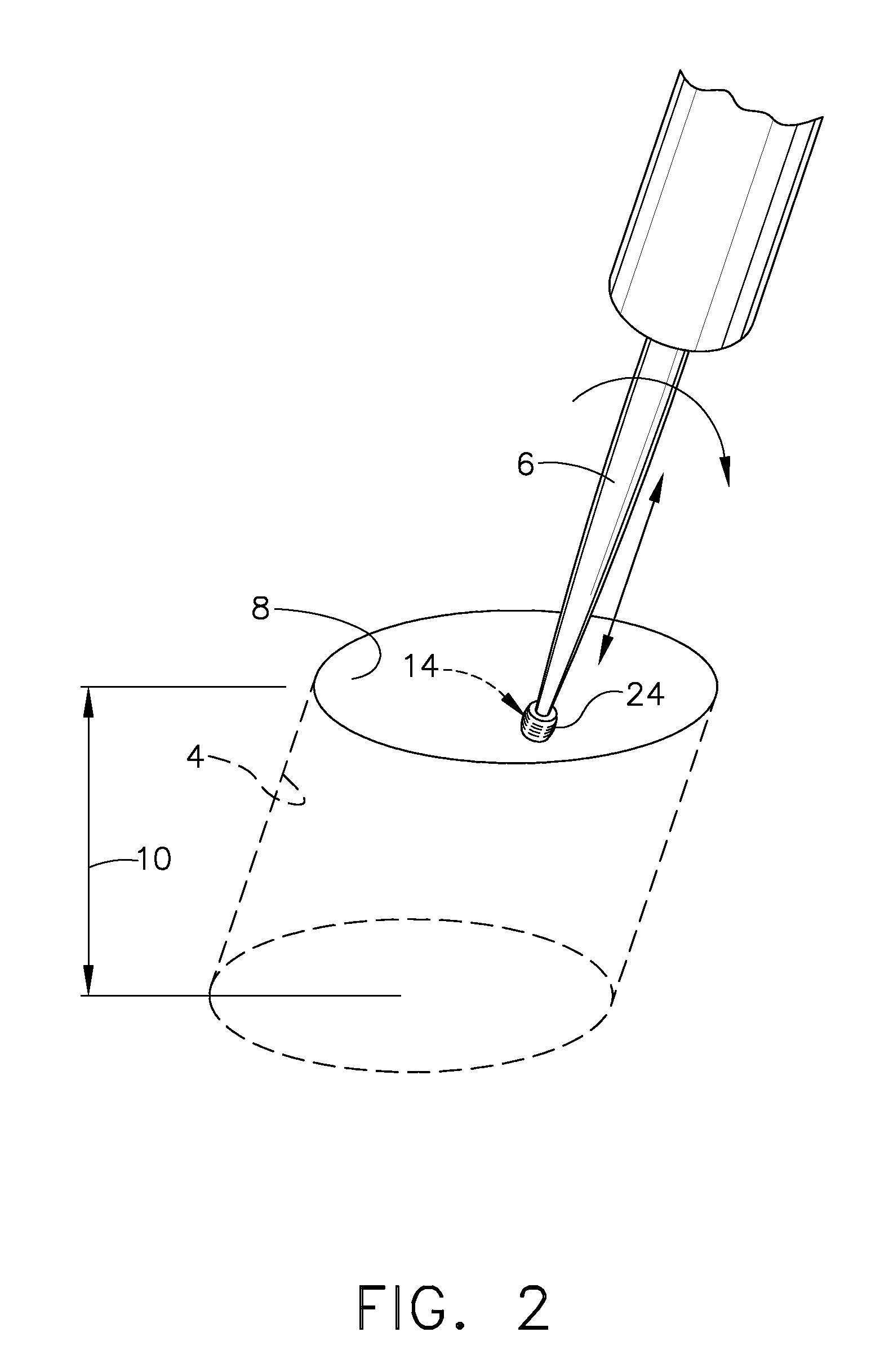Method of aligning probe for eddy current inspection
a technology of eddy current and alignment template, which is applied in the direction of mechanical measurement arrangement, mechanical roughness/irregularity measurement, instruments, etc., can solve the problems of preventing the probe from being positioned at a uniform distance from the component, the procedure for aligning the probe for inspection can be very time-consuming, and the small coil is extremely sensitive to the inspection equipment. , to achieve the effect of reducing errors, eliminating alignment templates, and reducing errors
- Summary
- Abstract
- Description
- Claims
- Application Information
AI Technical Summary
Benefits of technology
Problems solved by technology
Method used
Image
Examples
Embodiment Construction
[0029]A touch probe is used to align the EC probe for eddy current inspection of manufactured components such as gas turbine engine components. FIG. 1 illustrates the eddy current inspection of an oil drain hole 8 of a component. While FIG. 1 is shown and described as the feature being inspected, any feature or surface requiring inspection may be utilized. The eddy current probe 6 is placed inside the oil drain hole 8 as shown in FIG. 2, or near the component for inspection. An alternating current through the probe coil 14 (not shown) produces eddy currents in the component surface 4. The reaction of the eddy currents in the component surface 4 are monitored by the probe 6 and are sent to a computer to process. Before the inspection can be initiated, however, several steps must be performed by using a touch probe to correctly align the eddy current probe 6 to ensure accurate results. Lift-off, the gap between the EC probe 6 and the component surface 4, must be eliminated during insp...
PUM
 Login to View More
Login to View More Abstract
Description
Claims
Application Information
 Login to View More
Login to View More - R&D
- Intellectual Property
- Life Sciences
- Materials
- Tech Scout
- Unparalleled Data Quality
- Higher Quality Content
- 60% Fewer Hallucinations
Browse by: Latest US Patents, China's latest patents, Technical Efficacy Thesaurus, Application Domain, Technology Topic, Popular Technical Reports.
© 2025 PatSnap. All rights reserved.Legal|Privacy policy|Modern Slavery Act Transparency Statement|Sitemap|About US| Contact US: help@patsnap.com



